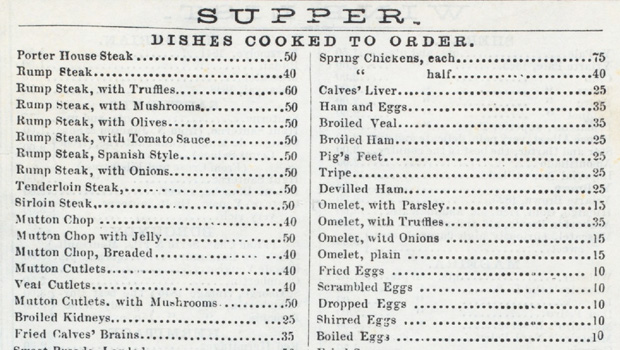Perusing menu options
"What's on the menu?" That's the first thing you ask when you sit down at a restaurant. And the answer is always right here. Well, almost always. Rita Braver has been perusing menus past, present, and future:
If you've ever wondered what's on the menu at the best restaurant in America, you better listen up . . . because at Eleven Madison Park in New York City -- named #1 this year by the Diner's Club -- there's nothing to read. No decisions to make.
Like the lucky diners we invited for our report, everyone here eats exactly what chef Daniel Humm decides to present.
"When you're in somebody's home, you don't have a choice," he said. "You're not given a menu. And so here, you're in our home."
But for most of the other 635,000 restaurants across America, a menu is essential.
In vaults beneath the marble lions watching over the New York Public Library, curator Rebecca Federman oversees a unique collection: The library's roughly 45,000 menus, dating from the mid-19th century to the present day.
Braver asked, "Why are menus worth saving and collecting?"
"Because they tell a part of history that very few other objects can talk about, which is the history of how people have eaten out over time," said Federman.
The collection offers arm-chair diners a seat at the table for meals-gone-by. Visit Mart Ackerman's Saloon in Toronto in 1856, and tuck into a porterhouse steak for 50 cents.
Or pull up a chair at Boston's famed Parker House Hotel in 1858, and enjoy an appetizer of stewed eels for just 25 cents.
Some menus have great historical value, like those from the ill-fated Lusitania, sunk by a German U-boat in 1915. The library's menu listed the third-class bill of fare, the second-class bill of fare, and the first-class bill of fare from April 17, 1908.
There's a menu from a society dinner in 1894, complete with seating chart. "You see Cornelius Vanderbilt was there, J.P. Morgan, Stanford White," said Federman. "You definitely see in 1894 who the bigwigs of New York society were."
Menus from high society, to Howard Johnson's, to Hooters.
Who comes to see these menus? "A lot of chefs come," said Federman. "They just want to get inspiration. Novelists have looked at our menus to get a period detail just so.
"We had a marine biologist quite a few years ago looking at our menus just to look at the fish populations based on what was being served."
While menus from the past are fascinating, Gregg Rapp is more interested in what's being served today. He says a menu represents "the heart and soul of the restaurant."
Rapp calls himself a "menu engineer." For 33 years he's been re-designing menus at hundreds of restaurants big and small, like the Exo Café in Queens, N.Y.
Some of his tips?
No dollar signs: "I've been taking dollar signs off my whole career, 'cause that softens the price," he said.
A box on the menu draws the eye: "When you see a sea of type, that will direct you."
Typeface, print color, even the feel of the paper is important. But all that may be about to change.
"IPad menus are the wave of the future," Rapp said.
That's right: Big chains like Chili's are rolling out computer tablet menus.
"What I like about iPad menus is you're able to hit the button if you're vegetarian, and then you don't have to go through all the meat and seafood dishes," said Rapp. "If you're gluten free, you can hit that button."
So if paper menus are becoming obsolete, these souvenirs may seem all the more precious -- wonderful keepsakes that give a sense of time and place.
For more info:
- Menus from the collection of the New York Public Library
- Eleven Madison Park, New York
- Gregg Rapp, Menu Engineer
- Exo Café, Forest Hills, N.Y.
